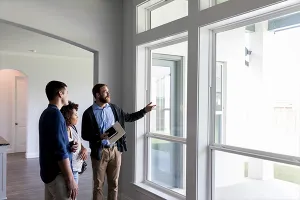In the last five years, San Francisco metropolitan area added 345,700 new jobs, but issued permits for only 20,241 single-family units. Meanwhile, home prices increased by 54 percent[1]. During the same period, Houston created 307,500 new jobs and permitted 173,638 new single-family units. Home prices rose 32 percent in Houston metropolitan area.
This example reveals the difficulty in San Francisco of construction keeping up with job growth. But which other metro areas are dealing with housing shortages? While housing is the logical result of economic forces — demand and supply — we calculated the Jobs/Permits ratio for the 100 largest metro areas.
We simply divided the number of new jobs (ending in June 2017) by the number of single-family units permitted in 2016. Six months lagged permits are a good proxy for single-family supply, since the average length of time from start to completion was 6.6 months according to Census[2]. The ratio shows the number of single-family units permitted for every new job. Higher ratio means that more jobs created than units did. Based on the data, ratio varies from -2 to 17. A negative ratio means that there was not any new job in the area. In fact, it shows that fewer jobs were in the area in 2017 compared to 2012.
The national ratio is 3.8 which means that a new single-family is permitted for every four new jobs. Areas with a ratio higher than the national level are considered as areas where job growth outpaces new single-family construction. Data reveals that the majority (65%) of the 100 largest metro areas had a lower ratio than nationwide[3].
Here are the top five metro areas with the highest and lowest ratios of new jobs to permits issued:
The result of this imbalance between the supply and demand for housing is the increasing home prices. Indeed, we observe that, from 2012 through 2016, home prices increased by 36 percent on average in areas with high ratio (median home price: $296,700) while prices rose 24 percent in the areas with low ratio (median home price = $187,900). The shortage of new housing drives up home prices while inventory of existing homes has reached historic lows.
But, why don’t builders build more single-family units? Higher-priced markets seem to have fewer permits and more expensive construction in 2016, according to one of our previous studies. Shortages of labor and subcontractors may be one of the reasons that construction cost is high in these areas. Based on the NAHB Survey, the share of builders reporting either some or a serious shortage has skyrocketed from a low of 21 percent in 2012, to 46 percent in 2014, 52 percent in 2015, and 56 percent in 2016. The net result of the labor shortage, based on the survey, is that 75% of builders say they have had to pay higher wages and bids, 64% have delayed projects, and 68% have raised home prices.
Furthermore, regulatory cost[4] has an impact on home building. Although regulatory cost is nearly the same since 2011, home prices have been increased substantially. Based on NAHB the regulatory cost in 2011 accounted for 25 percent while it slightly decreased to 24.3 percent[5] in 2016. However, median home price of a new single family home sold increased from $227,200 to $316,200 in 2016. We calculated the regulatory cost as a share of the final home price for both years and we found that regulatory cost actually increased 35 percent because of the price increase.
DATA for the 100 largest metropolitan areas.
[1] NAR Existing Home Sales, Median home price for single-family homes only (2016-2012).
[2] U.S. Census Bureau, New Residential Construction.
[3] Also, it is interesting to note that 40 percent of the 100 largest metro areas had a ratio lower than the average household size. Based on the American Community Survey the average household size in 2015 was 3.
[4]Based on NAHB, regulatory cost includes pure cost of delay, cost of applying for zoning/subdivision approval, costs incurred after approval/before construction, value of land dedicated/left unbuilt and impact of changes in development standards.
[5]NAHB, Government Regulation in the price of a new home, May 2, 2016
http://www.nahbclassic.org/generic.aspx?sectionID=734&genericContentID=250611&channelID=311&_ga=2.198136621.363006066.1501185072-906526032.1501185072








